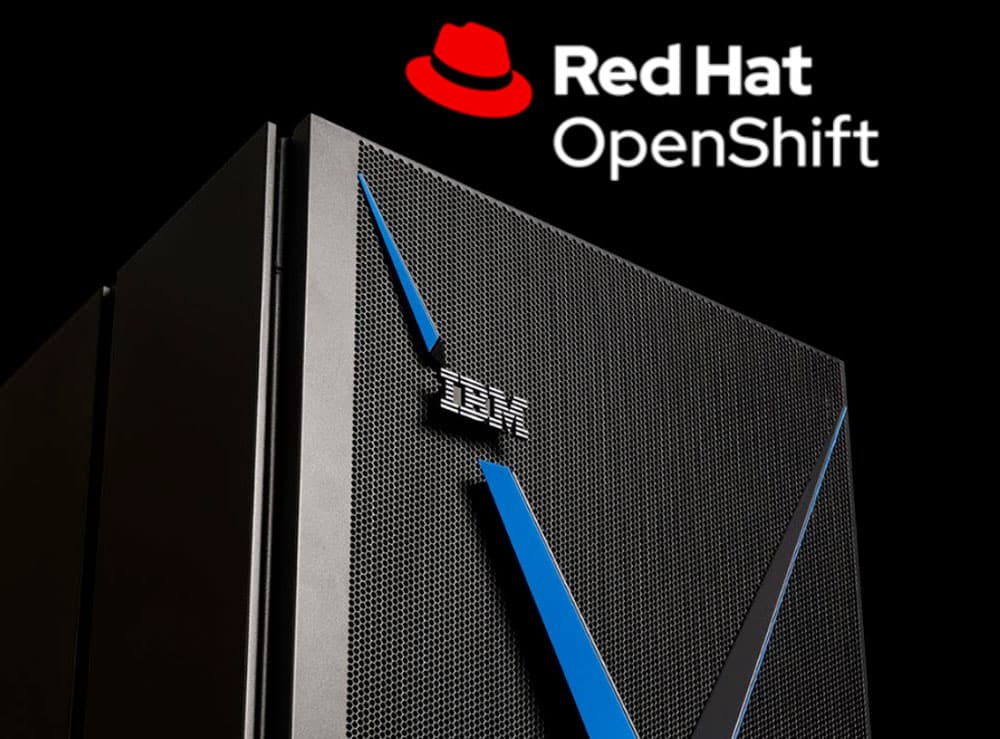Today IBM announced that Red Hat software is now available on IBM Power System. The company is also announcing new IBM Power Systems hardware. These announcements center around bringing Red Hat tools to IBM’s powerful servers to enable customers to better develop cloud-native applications and deploy them into high-performance hybrid cloud environments. The announcements today focus on the new IBM Power Private Cloud Rack Solution, expanded Red Hat capabilities, and extended dynamic capacity.
Today IBM announced that Red Hat software is now available on IBM Power System. The company is also announcing new IBM Power Systems hardware. These announcements center around bringing Red Hat tools to IBM’s powerful servers to enable customers to better develop cloud-native applications and deploy them into high-performance hybrid cloud environments. The announcements today focus on the new IBM Power Private Cloud Rack Solution, expanded Red Hat capabilities, and extended dynamic capacity.

IBM Power Systems are servers that the company states are specifically made for hybrid multi-cloud environments. The portfolio contains enterprise servers, scale-out servers, and accelerated servers each focusing on different aspects. These servers leverage the IBM POWER processors, currently on POWER10. POWER10 is optimized for Red Hat OpenShift. IBM acquired Red Hat a few years ago and has been slowly integrating the software into its portfolio, which brings us to today. Further combining the two bring the following benefits:
- Red Hat OpenShift on IBM Power Virtual Server –the container platform is now available on IBM Power Virtual Server leveraging OpenShift’s platform-agnostic installer. The IBM Power Virtual Server is an enterprise Infrastructure-as-a-Service offering built around IBM POWER9 and offering low-latency access to 200+ IBM Cloud services. Since it launched in mid-2019, the service has expanded into ten data centers around the globe with more than 100 clients currently leveraging virtualized IBM POWER9-based systems. In addition, IBM Power Virtual Server clients can now run leading business applications like SAP HANA in an IBM POWER9-based cloud.
- Red Hat Runtimes on IBM Power Systems – To help organizations and developers create cloud-native applications, Red Hat Runtimes is now supported on IBM Power Systems. Red Hat Runtimes is a set of products, tools, and components designed to develop and maintain cloud-native applications. Now, developers looking to create cloud-native applications on IBM Power Systems have access to leading open-source frameworks and runtimes that provide a single development experience for hybrid applications spanning IBM Power Systems and other platforms.
- New Red Hat Ansible Modules – Red Hat Ansible, made available on IBM Power Systems last year, is an open-source-based tool that allows for simple automation of common IT tasks, freeing up IT administrator time as well as compute resources to focus on other tasks. IBM has created an extensive set of Ansible modules for the IBM Power Systems user community. Today, IBM Power Systems added 22 new Ansibles modules that bring new automation capabilities for common tasks like Patch Management, Security Management, OS & Application Deployment, Continuous Delivery, Centralized Backup and Recovery, and Virtualization Management & Provisioning. They bring the total number of POWER-supported Ansible modules to 102, and they have been downloaded over 11,000 times on GitHub as of February 23.
Customers leveraging IBM Power Systems are virtualizing workloads more and more and will continue to do so going forward. This is beneficial to the companies’ operations but is a bit tricky when laying out the data center hardware. Customers a looking for cloud-like experiences that allow them to increase resources on demand. To address this, the company has two new technologies it is announcing today:
- The IBM Power Private Cloud Rack Solution – A pre-configured system with compute, storage, networking, and pre-installed software to match an organization’s existing infrastructure, be it based around Linux, IBM i, or AIX. The system’s software stack can be pre-customized with the latest private cloud software like PowerVC, to help organizations operationalize their cloud management and provide an IaaS environment to help clients accelerate development and operations for Kubernetes container-based cloud-native applications with Red Hat OpenShift Container Platform.
- Cloud-like Capacity and Pricing Across the Hybrid Cloud – The COVID-19 pandemic has exacerbated the need for flexible, dynamic computing capacity to respond to changing IT demands. IBM had already enabled Dynamic Capacity for select on-premises IBM i and AIX Power Systems servers, allowing users to dynamically scale by unlocking additional compute cores as needed and get cloud-like consumption-based pricing. Now, IBM is extending that ability to the hybrid cloud by piloting hybrid capacity credits, which can be purchased and used to unlock capacity on on-premises servers as well as IBM Power Virtual Servers, based on where the user needs the additional compute power. IBM is also working with other ecosystem partners to further extend dynamic capacity across multiple Linux distributions.
Engage with StorageReview
Newsletter | YouTube | Podcast iTunes/Spotify | Instagram | Twitter | Facebook | RSS Feed
